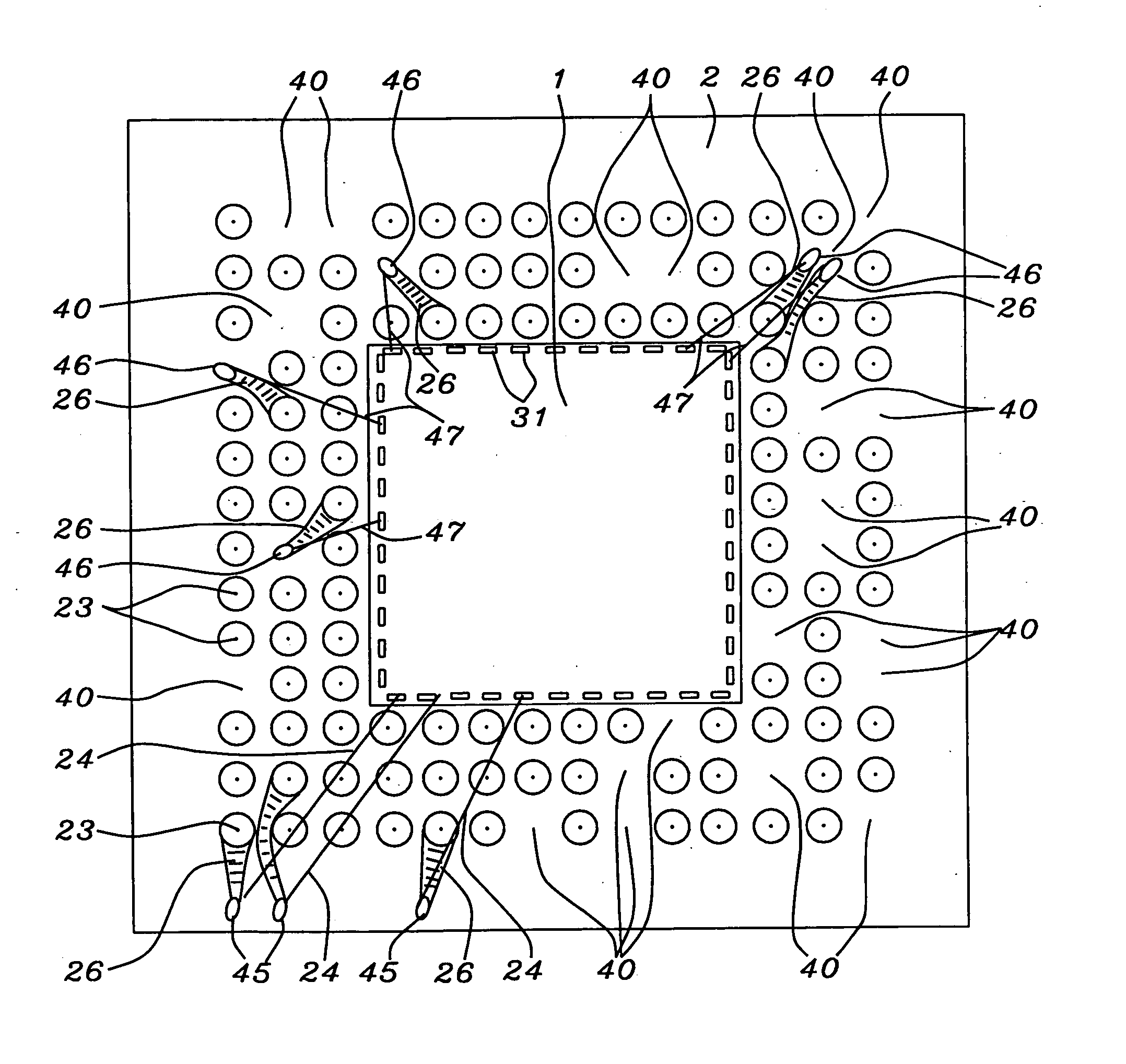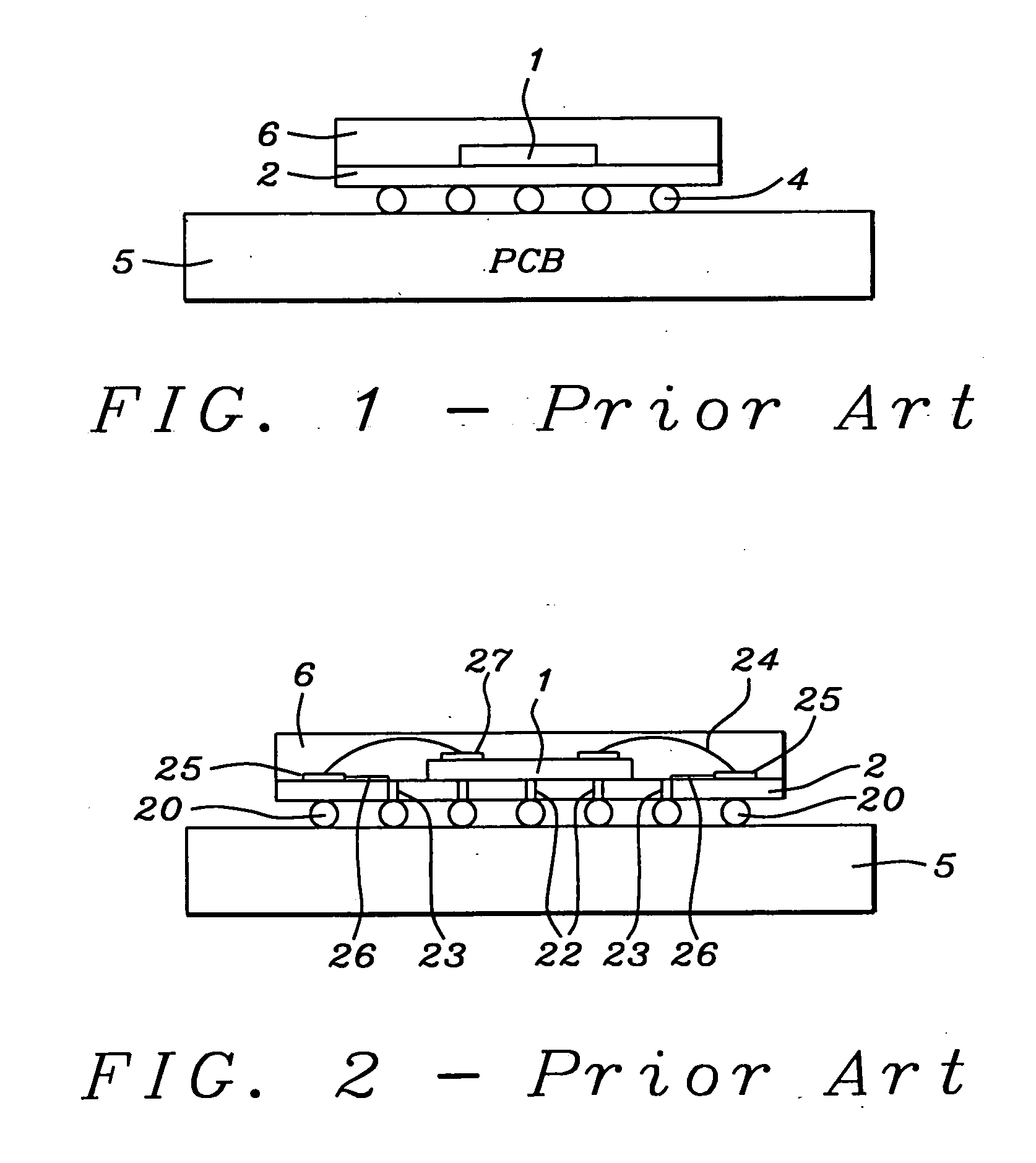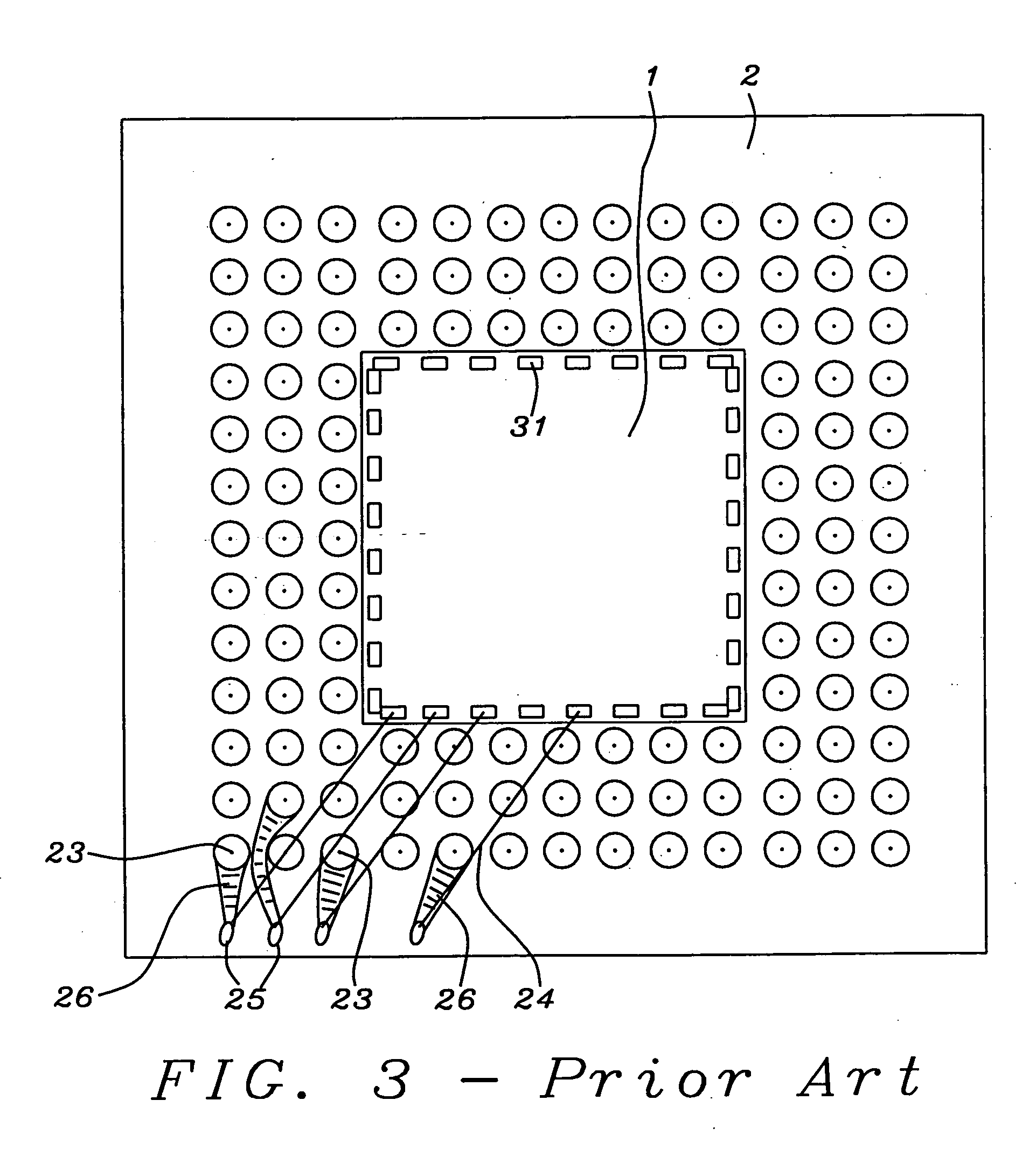Partially populated ball grid design to accommodate landing pads close to the die
a ball grid and die-nahing technology, applied in the field of semiconductor packages, can solve the problems of too long wires, inability to accommodate landing pads, and inability to allow miniaturized spacing for wire landing pads, so as to reduce the length of critical electrical connections
- Summary
- Abstract
- Description
- Claims
- Application Information
AI Technical Summary
Benefits of technology
Problems solved by technology
Method used
Image
Examples
Embodiment Construction
[0023] The preferred embodiments disclose a method and a structure capable to reduce the wire-lengths of the wires providing the connections of a semiconductor package from a chip to a substrate without increasing the space required on a motherboard.
[0024] The BGA design principles allow any number of solder balls or rows of solder balls. FIG. 4 shows a principal layout of a new structure of the present invention. Similar to FIG. 3 prior art, FIG. 4 shows a chip 1 on a substrate 2, leads 26 from wire landing pads to through-hole vias 23 and wires 24 from said landing pads on the substrate 2 to bonding pads 31 on the chip 1. In order to reduce the complexity in FIG. 4 only a few wire-landing pads, related bonding wires, and leads on the substrate are shown. One of the objectives of the invention was not to increase the number of solder balls required and not to increase the size of the area required on the mother-board, thus not increasing the cost of said BGA module. In the design ...
PUM
 Login to View More
Login to View More Abstract
Description
Claims
Application Information
 Login to View More
Login to View More - R&D
- Intellectual Property
- Life Sciences
- Materials
- Tech Scout
- Unparalleled Data Quality
- Higher Quality Content
- 60% Fewer Hallucinations
Browse by: Latest US Patents, China's latest patents, Technical Efficacy Thesaurus, Application Domain, Technology Topic, Popular Technical Reports.
© 2025 PatSnap. All rights reserved.Legal|Privacy policy|Modern Slavery Act Transparency Statement|Sitemap|About US| Contact US: help@patsnap.com



